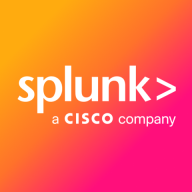

Splunk Enterprise Security and Logz.io compete in cybersecurity analytics. Splunk has a superior hand in data analytics capabilities, while Logz.io excels in integration features.
Features: Splunk Enterprise Security offers powerful data analytics, extensive security event correlation, and sophisticated threat intelligence. Its incident management is expansive, and it caters to complex, large-scale environments. Logz.io is known for easy integration with various platforms, user-friendly experience, efficient log management, and AI-driven analytics.
Room for Improvement: Splunk requires a complex setup, which can be resource-intensive, and has a steep learning curve for new users. It could benefit from more lightweight deployment options. Logz.io, while user-friendly, lacks the depth in advanced analytics seen in Splunk and might improve its real-time alerting capabilities.
Ease of Deployment and Customer Service: Splunk requires a more elaborate setup, needing significant IT resources. However, it excels in customer support with extensive resources. Logz.io offers a straightforward deployment process more accessible to smaller teams with limited resources, providing responsive customer service supporting both setup and ongoing use.
Pricing and ROI: Splunk involves higher setup costs reflecting its comprehensive features and complexity, offering substantial ROI for firms leveraging its capabilities. Logz.io provides competitive pricing focusing on cost-effective scalability, delivering significant ROI through efficient use and lower upfront costs. Organizations focusing on cost benefits might prefer Logz.io, while those needing extensive analytics might justify Splunk’s initial investment.


Logz.io is a leading cloud-native observability platform that enables engineers to use the best open source tools in the market without the complexity of operating, managing, and scaling them. Logz.io offers four products: Log Management built on ELK, Infrastructure Monitoring based on Prometheus, Distributed Tracing based on Jaeger, and an ELK-based Cloud SIEM. These are offered as fully managed, integrated cloud services designed to help engineers monitor, troubleshoot and secure their distributed cloud workloads more effectively. Engineering driven companies like Siemens, Unity and ZipRecruiter use Logz.io to simplify monitoring and security workflows, increasing developer productivity, reducing time to resolve issues, and increasing the performance and security of their mission-critical applications.
Splunk Enterprise Security is widely used for security operations, including threat detection, incident response, and log monitoring. It centralizes log management, offers security analytics, and ensures compliance, enhancing the overall security posture of organizations.
Companies leverage Splunk Enterprise Security to monitor endpoints, networks, and users, detecting anomalies, brute force attacks, and unauthorized access. They use it for fraud detection, machine learning, and real-time alerts within their SOCs. The platform enhances visibility and correlates data from multiple sources to identify security threats efficiently. Key features include comprehensive dashboards, excellent reporting capabilities, robust log aggregation, and flexible data ingestion. Users appreciate its SIEM capabilities, threat intelligence, risk-based alerting, and correlation searches. Highly scalable and stable, it suits multi-cloud environments, reducing alert volumes and speeding up investigations.
What are the key features?Splunk Enterprise Security is implemented across industries like finance, healthcare, and retail. Financial institutions use it for fraud detection and compliance, while healthcare organizations leverage its capabilities to safeguard patient data. Retailers deploy it to protect customer information and ensure secure transactions.
We monitor all Security Information and Event Management (SIEM) reviews to prevent fraudulent reviews and keep review quality high. We do not post reviews by company employees or direct competitors. We validate each review for authenticity via cross-reference with LinkedIn, and personal follow-up with the reviewer when necessary.